|
|
Updated as per personal communication with Carlot Didier
Updated as per personal communication with Frederik Goussey
Updated as per More, Kitching and Cocucci's Hawkmoths of Argentina 2005, December 2009
Updated as per
AN ANNOTATED CHECKLIST OF THE SPHINGIDAE OF BOLIVIA, December 2009
Updated as per CATE (Venezuela: Suapure); February 6, 2011
Updated as per French Guiana Systematics: Sphingidae; May 12, 2011
Updated as per "A Hawk Moths fauna of southern Maranhão state, Brazil, ... "; NEVA: Jahrgang 34 Heft 3 November 2013; via Jean Haxaire; April 5, 2014
Updated as per personal communication with Gregory Nielsen, Meta, Colombia; August 7, 2014
Updated as per personal communication with Ezequiel Bustos (Shilap revta. lepid. 43 (172) Diciembre, 2015, 615-631 eISSN 2340-4078 ISSN 0300-5267), January 4, 2016
Updated as per personal communication with Peter Waniek (Rio de Janeiro, Brazil; February 20, 2016); February 20, 2016
Updated as per personal communication with Francierlem Oliveira (adult, Extremoz, Rio Grande do Norte, Brazil; April 26, 2018); April 30, 2018
Updated as per personal communication with Bruno Moraes (larva, Belo Horizonte, Minas Gerais, Brazil; April 17, 2018); April 30, 2018
Updated as per personal communication with Gregory Nielsen, Villavicencio, Meta, Colombia; mature larvae, December 3, 2020; December 4, 2020
|
Isognathus caricae caricae
(Linnaeus, 1758) Sphinx
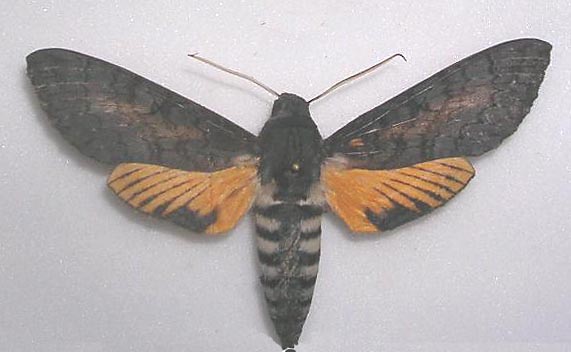
Isognathus caricae male, Pote, Minas Gerais, Brazil,
November 11, 2004, courtesy of Frederik Goussey.
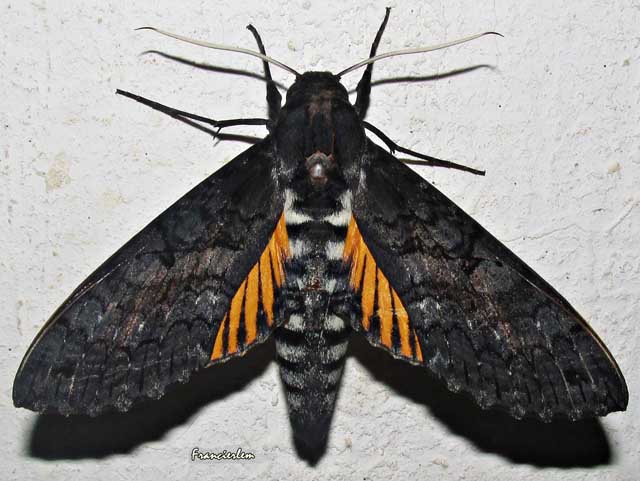
Isognathus caricae, Extremoz, Rio Grande do Norte, Brazil,
April 26, 2018, 18:38, courtesy of Francierlem Oliveira,
inaccurate digital repair to thorax by Bill Oehlke.
This site has been created by Bill Oehlke.
Comments, suggestions and/or additional information are welcomed by Bill.
TAXONOMY:
Family: Sphingidae, Latreille, 1802
Subfamily: Macroglossinae, Harris, 1839
Tribe: Dilophonotini, Burmeister, 1878
Genus: Isognathus G. Felder & R. Felder, 1862 ...........
Species: caricae Linnaeus, 1758
|
DISTRIBUTION:
Isognathus caricae
(Wing span: males: 94mm; females: 104mm),
flies from
Costa Rica to
Colombia: Meta: Villavicencio (GN);
Venezuela: Suapure;
French Guiana: St. Laurent du Maroni; TBA, Saint-Georges l'Oyopok
Bolivia: Santa Cruz;
Argentina: Buenos Aires, Cordoba, Corrientes, Entre Rios, Misiones; and
Brazil: Minas Gerais: Belo Horizonte (BM); Bahia; Rio Grande do Norte: Extemoz (FO); southern Maranhao; Rio de Janeiro (PW); with "America" given
as the specimen type locality. Carlot Didier reports them from
French Guiana.
Peter Waniek confirms it from Rio de Janeiro, Brazil, with the beautiful image below.
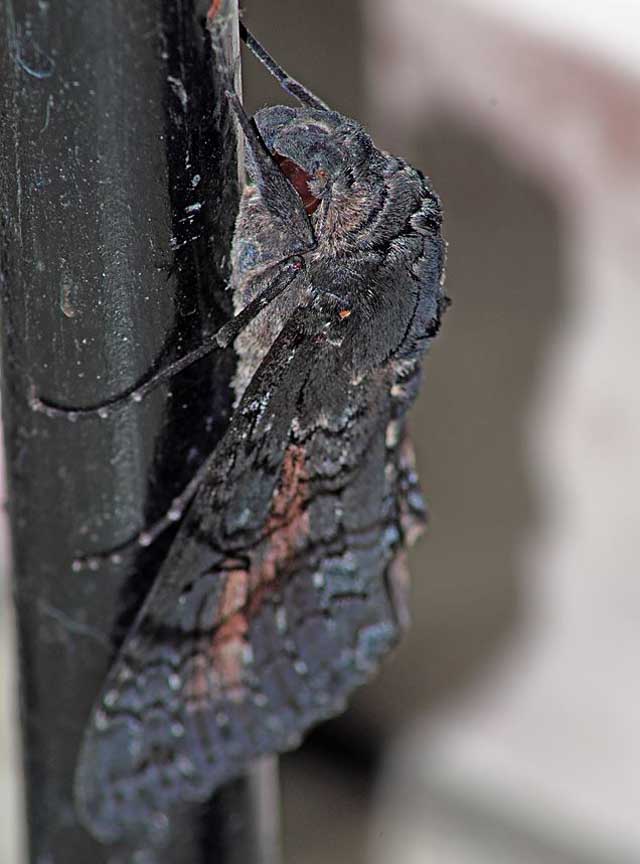
Isognathus caricae, Rio de Janeiro, Brazil,
February 20, 2016, courtesy of Peter Waniek, id by Bill Oehlke.
This is the only Isognathus species that has the dark marginal band of the hindwing upperside being replaced by a series of black
streaks along the veins. CATE
The forewing has two orangey-brown patches connected below the cell mark, and a smaller basal patch along the inner margin. Otherwise forewings are dark grey.
The orangey markings are especially prominent in the fresh image supplied by Peter Waniek.
Many thanks to Greg Nielsen who supplies the beautiful image below, confirming a presence in Colombia.
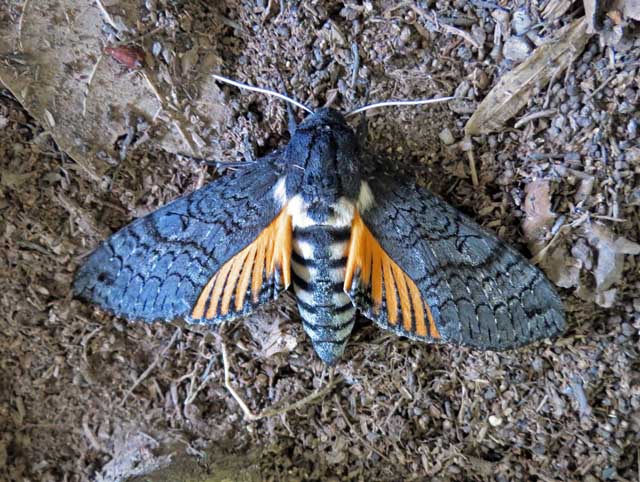
Isognathus caricae, Colombia, Dept. Meta, Km 13 via Acacias, Villavicencio,
04°03’55.0 N 073°41’87.0 W at 500m, photo G. Nielsen VIII-7-2014
Subspecies Isognathus caricae rainermarxi Eitschberger, 1999, flies in
Peru: Amazonas; and it may be this subspecies that flies in the more southerly nations listed above.
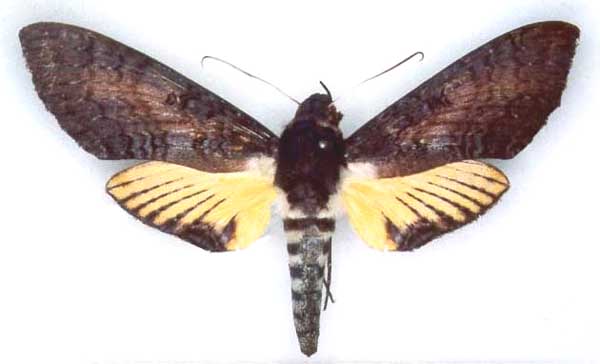
Isognathus caricae male, Costa Rica, courtesy of Dan Janzen.
FLIGHT TIMES:
There are probably several flights throughout the year. The specimen courtesy of Frederik Goussey was taken in November.
Images from Rio Grande do Norte were taken April 26, 2018.
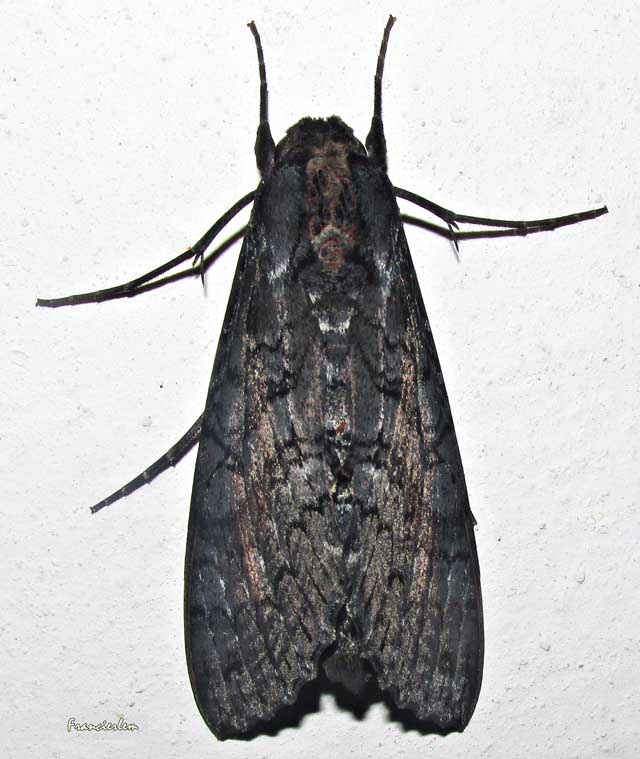
Isognathus caricae, Extremoz, Rio Grande do Norte, Brazil,
April 26, 2018, 18:38, courtesy of Francierlem Oliveira,
inaccurate digital repair to thorax by Bill Oehlke.
ECLOSION:
Moths emerge from pupae in thin-walled cocoons under leaf litter within 8-24 days of pupation.
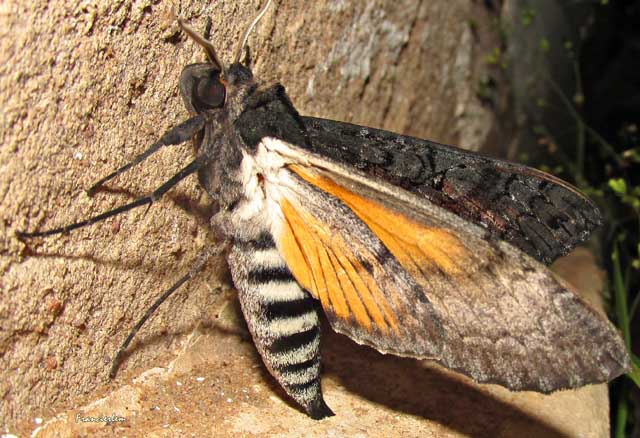
Isognathus caricae, Extremoz, Rio Grande do Norte, Brazil,
April 26, 2018, 18:38, courtesy of Francierlem Oliveira,
inaccurate digital repair to thorax by Bill Oehlke.
SCENTING AND MATING:
Females call in the males with a pheromone released from a gland at the tip of the abdomen. Adults nectar at flowers, including
petunia.
EGGS, LARVAE, PUPAE:
Females probably lay eggs on leaves of Apocynacea. Himatanthus
obovatus, Allamanda cathartica and Allamanda schottii have been reported as a host. Larvae have
long tails; colouration suggests they are unpalatable to birds. |
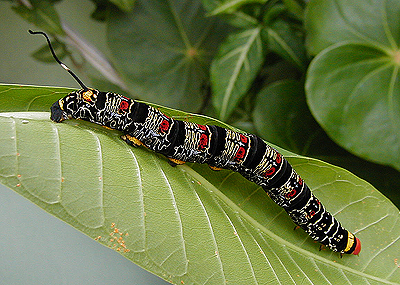 |
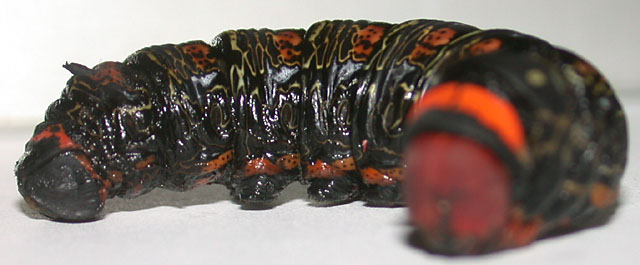
Dark prepupal Isognathus caricae larva, French Guiana,
courtesy of Antoine Guyonnet
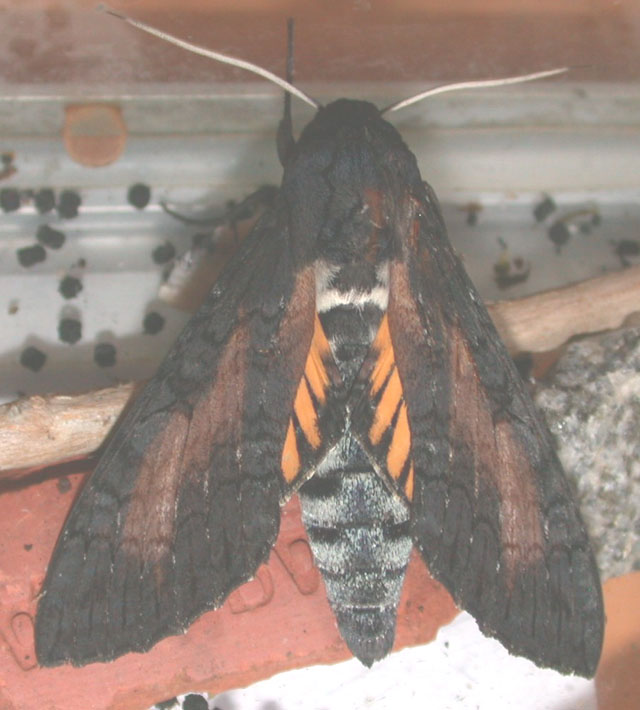
Isognathus caricae moth from larva above, St. Laurent du Maroni, French Guiana,
courtesy of Antoine Guyonnet
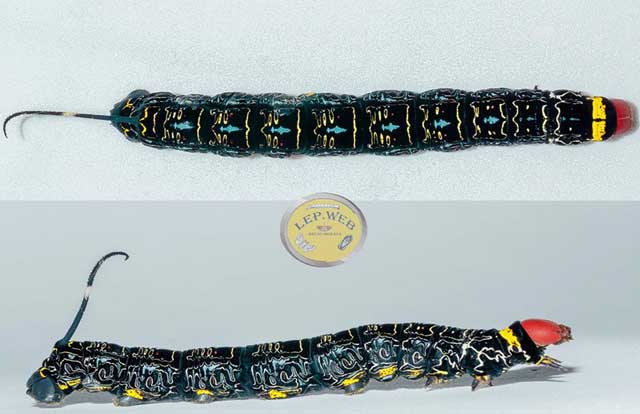
Isognathus caricae final instar, Belo Horizonte, Minas Gerais, Brazil,
April 17, 2018, courtesy of Bruno Moraes.
The pupae are also quite colourful, and, I suspect, are very lively. Moths generaly emerge witin 8-24 days of pupation. |
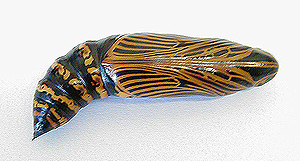 |
Return to Sphingidae Index
Return to Dilophonotini Tribe











